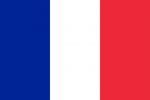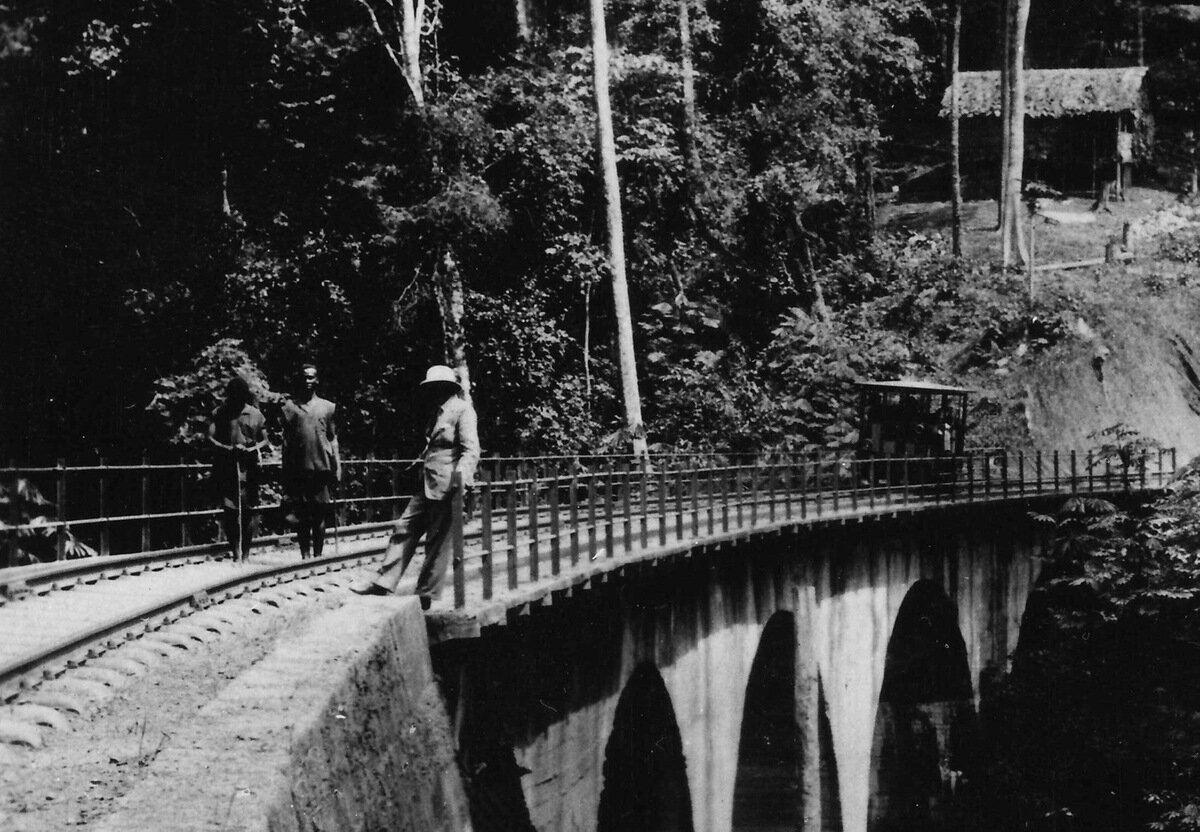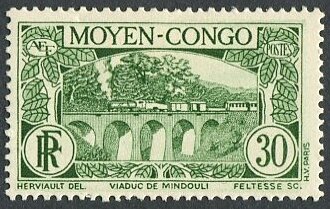
Middle Congo
Quick reference
General issues: French colony 1907-1936
Country name on general issues: Moyen-Congo
Currency: 1 Franc = 100 Centimes 1907-1936
Population: 271 000 in 1905, 746 000 in 1936
Political history Middle Congo
Middle Congo is located in central Africa – the current Congo Brazzaville. The population consists of Bantu peoples, the largest population group being the Kongo. The first Europeans to explore Middle Congo are the French. Having settled in neighboring Gabon from 1839, in subsequent years the interior is explored – an effort that gains momentum from 1875 when the French explorer De Brazza embarks on his first journey. De Brazza signs treaties of protection and, in 188o, founds the city that will be named after him – Brazzaville – and that will become the capital of Middle Congo. At the 1885 Berlin conference, where the colonial powers divide their respective spheres of interest in Africa, the territories explored by De Brazza are claimed by and awarded to France. The French, in 1886, establish the colonies of French Congo and Gabon.
As the French set out to establish effective colonial rule and extend their presence in what will become French Equatorial Africa, the French possessions will go through a number of administrative changes. In 1888, Gabon is joined with French Congo to form the colony of Gabon-Congo. Gabon-Congo is renamed French Congo in 1891. In 1903 – effective 1904 – French Congo is defined as a higher level of government administration. Middle Congo is now established as a separate colony – along with the colony of Gabon, the French territory of Ubangi Shari and the French military territory of Chad, all subordinate to the commissioner general – from 1908 the governor general – of French Congo. French Congo is finally named French Equatorial Africa in 1910.

As the lower part of the Congo River was not navigable the French built a railroad to connect Brazzaville to Pointe-Noire on the Atlantic Ocean. Building a railroad included the construction of tunnels and viaducts.
The borders of Middle Congo with the neighboring countries have been defined through treaties between 1885 and 1900. In 1911, the French transfer part of French Equatorial Africa – including part of Middle Congo – to the then German Cameroon as a result of the treaty of Fez – one of the treaties leading up to the establishment of a French protectorate over Morocco. The transferred part of French Equatorial Africa is returned to the French in 1919. The borders within French Equatorial Africa will change a number of times. In the process of the exchange of territories with Cameroon, parts of Middle Congo are, in 1911 and 1919, transferred to Ubangi Shari and part of Gabon to Middle Congo. In 1918, part of the coastal region of Gabon is transferred to Middle Congo – Middle Congo thus gaining access to the Atlantic Ocean. In 1926, a further part – the Haut Ogooué province – of Gabon is transferred to Middle Congo. The Haut Ogooué province is returned to Gabon in 1947, by which the borders of Middle Congo are established.
During the colonial period, agricultural development is realized with a focus on the the production of rubber, later the production of timber. To develop Middle Congo economically, the French enlist a number of private companies that are given most of Middle Congo in concession from 1899 – a policy that proves to be less than successful and will be aborted from 1919.
In 1946, Middle Congo becomes – as do all French possessions – a French overseas territory. In the 1950’s, Middle Congo moves towards independence. In 1958, self government is gained as the republic of Congo – commonly called Congo Brazzaville to distinguish it from neighboring Congo Kinshasa, the former Belgian Congo. The republic of Congo gains full independence in 1960.
Postal history Middle Congo
The first post office in the future Middle Congo is opened, in 1881, in Brazzaville, mail being processed through Gabon. The general issues for the French colonies are used. These are, from 1886, superseded by the issues for Gabon and, from 1891, by the stamps of French Congo. After Middle Congo has been established as a separate colony within French Congo, from 1907 stamps are issued inscribed ‘Moyen Congo'[1]‘Middle Congo’ . The first set is of designs identical to the last set of French Congo. This set is reissued in 1924, now overprinted ‘Afrique Equatoriale Française’. A last set is issued in 1933 – inscribed ‘Moyen Congo’ and ‘AEF’ for ‘Afrique Equatoriale Française.
The stamps of Middle Congo are, from 1936, superseded by the issues of French Equatorial Africa. The self governing republic of Congo will issue stamps from 1959 and the independent republic of Congo from 1960.
The postal network in French Equatorial Africa is, from Middle Congo, extended into Ubangi-Shari and Chad. Stamps of Middle Congo are used in Ubangi Shari and Chad until superseded by the issues for Ubangi Shari Chad from 1915.
Album pages
← Previous page: MayotteNext page: Mohéli →



